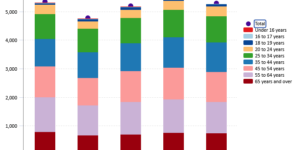Purdue Pharma LP’s decision to stop promoting its opioid drugs to doctors is being hailed as the first result of a judge’s push for concrete solutions to a nationwide epidemic, even though the company says the move has nothing to do with a massive lawsuit against drugmakers.
On Feb. 9 Purdue announced it would lay off 200 salespeople and halt marketing of its much-abused OxyContin painkiller in doctors’ offices, a week after U.S. District Judge Dan Polster in Cleveland met with drugmakers fighting hundreds of opioid lawsuits filed by cities and counties.
Purdue’s timing might build goodwill with the judge, said Jean Eggen, a mass-tort law professor at Widener University in Delaware. That could create some leverage if there’s an eventual settlement and may help the company as it argues for a lower payment, she said.
“Purdue’s decision to stop marketing OxyContin to doctors is just the kind of thing the judge is looking for in this case,” Eggen said. “It will mean doctors will write fewer prescriptions, which translates into less abuse.”
Purdue may get some initial feedback Tuesday, when lawyers involved in the lawsuits gather in Cleveland for another negotiating session with Polster. Attorneys for the two sides assemble in separate courtrooms while officials shuttle proposals back and forth. The meeting is closed to the public and a gag order has been imposed on the parties.
Drugmakers and drug distributors face more than 300 suits by governments accusing them of downplaying opioids’ risks and over-selling their benefits. Polster has said he hopes a settlement can be hammered out this year.
Officials at Stamford, Connecticut-based Purdue said the move wasn’t in response to Polster’s demands. “We made this decision independent of any settlement discussion or litigation,” Robert Josephson, a Purdue spokesman, said in an emailed statement. “We are not receiving relief by voluntarily moving in this direction.”
But experts have their doubts about Purdue’s claim.
“They have been criticized over their marketing of OxyContin for years and now they decide to stop doing it?” asked Richard Ausness, a University of Kentucky law professor. “I guess better late than never, but I definitely think the judge’s settlement efforts played a role in this.”
Purdue is credited with helping develop many modern tactics of aggressive pharmaceutical promotion. Its ads pushing OxyContin included music, fishing hats and stuffed toys. Purdue spent $200 million marketing OxyContin in 2001, according to court filings. The next year, sales of the painkiller topped $1.5 billion.
OxyContin, which debuted in 1996, is Purdue’s biggest-selling drug, though competition from generics have cut sales to $1.8 billion in 2017 from $2.8 billion five years earlier, according to data compiled by Symphony Health Solutions. Purdue also sells the painkiller Hysingla.
Other opioid makers have also slowed promotion efforts, though often as part of cost cutting. Teva Pharmaceuticals Industries Ltd., struggling since buying Allergan’s generics business in 2016, stopped marketing the Fentora lozenge earlier this year, said Kaelan Hollon, a company spokeswoman. The product used fentanyl, a painkiller said to be 100 stronger than morphine. Israel-based Teva’s “only other branded opioid product, Actiq, has not been marketed for over a decade,” Hollon said.
Dublin-based Endo International Plc hasn’t promoted any pain products since December 2016 when the company cut its 375-person sales force as part of a restructuring, spokeswoman Heather Zoumas Lubeski said in an email. Endo withdrew Opana ER from the U.S. in July 2017 after the FDA took the rare step of asking the company to do so. The company still makes an immediate-release Opana but said it’s not promoted.
Janssen Response
J&J’s Janssen unit stopped promoting opioid products in 2015, said Jessica Castle Smith, a company spokeswoman, adding its drugs represented “less than one percent of the total prescriptions written per year for opioid medications, including generics,” she said.
Almost 45,000 people died in the U.S. from opioid-related overdoses in the 12 months ending in July, according to the Centers for Disease Control and Prevention. That was up from 91 daily opioid overdose deaths the previous year, CDC officials said.
The epidemic cost the American economy $504 billion in 2015 — the equivalent of 2.8 percent of gross domestic product that year, according to a report last year by the Council of Economic Advisers.
The case is In Re: National Prescription Opiate Litigation, 17-cv-2804, U.S. District Court, Northern District of Ohio (Cleveland).





















 Study: Widening Gap Between Cyber Attack Causes, Public Perception
Study: Widening Gap Between Cyber Attack Causes, Public Perception  What’s Not Changing in 2025: Homeowners Outlook, Re Retentions
What’s Not Changing in 2025: Homeowners Outlook, Re Retentions  Most Distracting Holiday Songs for Drivers Ranked
Most Distracting Holiday Songs for Drivers Ranked  Reporter’s Notebook: ‘Nobody Else Does Telematics,’ Lemonade Exec Says
Reporter’s Notebook: ‘Nobody Else Does Telematics,’ Lemonade Exec Says 





